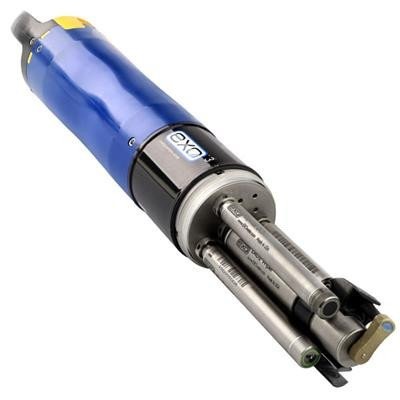
The meter uses a variety of sensors that are embedded in the water to pick up different data. The sensors may be a part of the meter or attached to a device submerged in water.
Multiparameter water quality meters are used in aquaculture, wastewater treatment, and drinking water treatment for environmental monitoring, marine research, and water quality testing. They continuously provide data on water quality that one can use to identify potential problems or growth areas.
It’s vital to consider factors like the number of parameters that one can monitor, the accuracy of the sensors, how simple the device is to operate, and how long the device will survive when selecting a multiparameter water quality meter. On some meters, you may also find extra functions like data logging and wireless connectivity for remote monitoring.
A multiparameter water quality meter may measure the pH, dissolved oxygen (DO), conductivity, total dissolved solids (TDS), salinity, temperature, and other physical and chemical water quality parameters. The following uses for a multiparameter water quality meter are common:
Monitoring the environment: To keep tabs on the well-being of aquatic ecosystems, including lakes, rivers, and oceans, environmental agencies, researchers, and other experts employ multiparameter water quality meters. By evaluating several water quality metrics, they can assess how pollution and other environmental stresses affect aquatic life.
Water treatment plants and public health officials use multiparameter water quality meters to test drinking water quality. They can locate contaminants, including bacteria, viruses, and chemicals that could harm human health.
Administration of the aquaculture industry: Aquaculture farmers monitor the water quality in their ponds or fish tanks using multiparameter water quality meters. To maintain the correct pH, DO, temperature, and nutrition levels for fish growth and health, they can help farmers.
Modern cycle observation: To keep track of the water quality used in their processes, industrial facilities utilize multiparameter water quality meters. This could involve taking measurements of variables like pH, conductivity, and TDS to ensure the water is appropriate for use in manufacturing and other activities.
Spa and pool testing: Pool and spa owners use Multiparameter water quality meters to test the water quality in their facilities. Preventing the growth of dangerous bacteria and algae can help keep the water comfortable and safe for swimmers.
Multiparameter water quality monitoring is crucial for long-term water safety in resource-constrained settings. Conventional water monitoring techniques require specialized staff, take a long time to complete, are challenging to use, and cannot be used on-site.
Most tools used to monitor water quality are standalone devices, such as turbidity, pH, conductivity, and dissolved oxygen meters. They require complicated installation and upkeep. Future progress will be characterized by high integration. We’ll concentrate on multiparameter sondes in this chapter.
Professionals employ a variety of equipment to assess water quality, includes Secchi discs (which detect water purity), probes, nets, gauges, and metres.
Multiparameter water quality metres combine numerous sensors into a single big “probe,” often known as a sonde. As a result, the user can use a single instrument to provide numerous bits of data to a single system.
Technical specifications of a multi-parameter water quality detector:
A multi-parameter water quality detector is indeed a modern type of equipment that can detect water quality concurrently and fast, with simple operation plus high accuracy. It can be used in conjunction with supporting reagents; no reference solution is needed. The optical system, flow route system, versatile sample detecting room, process control, and embedded software are the major components of the multi-parameter water quality detector. For the detection of absorption spectrum, the optical system offers the optical route and absorption spectrum analysis. Creating a calibration solutions rapidly yields the result, which is useful for field measurement and present measurement. Following are some technical features of multi-parameter water quality metres.
1. Excellent detection accuracy and data dependability.
2. Resistance to earthquakes. High moisture resistance.
3. The pretreatment module is rich and diverse, with built-in treatment units including such dilution, digesting, distilling, liquid distribution, and so on, with powerful anti-interference, boosting the instrument’s detection range and the reliability of the test samples.
4. Import duty pump valves with long life and no maintenance are chosen. In addition to regular reagent additions, based on the reasonable circumstances, the instrument simply requires the pump tube to be replaced every few weeks or years. Another aspect of everyday care is extremely simple.
5. Customizable operation allows for the measurement of many variables related to water quality in real time.
6. Fitted with specific reagent, that are dependable and stable, simple to operate, and guarantee detection results. Each moment a sample is evaluated, the quantity of reagents used is minimal, saving the operator time and money.
7. Supports one-key printing, has a built-in printer, and can copy recognition data in real time as well as query and print history data.
8. The multi-parameter water quality detector’s housing is composed of metal, which is both safe and long-lasting. Large-area glass windows allow for real-time monitoring of the experiment procedure.







